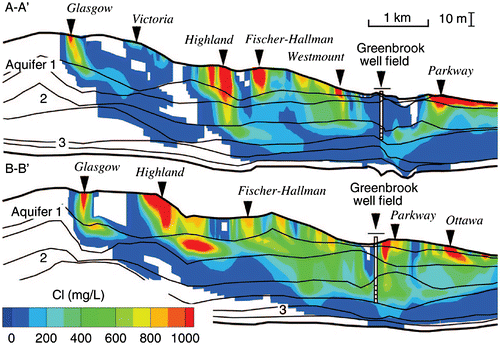Figures & data
Figure 1. Quasi-three-dimensional multi-aquifer system (from Rudolph and Sudicky Citation1990, with permission).
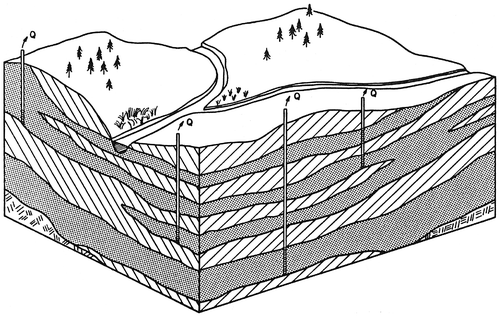
Figure 2. Waterloo Moraine model area (from Martin and Frind Citation1998, with permission).
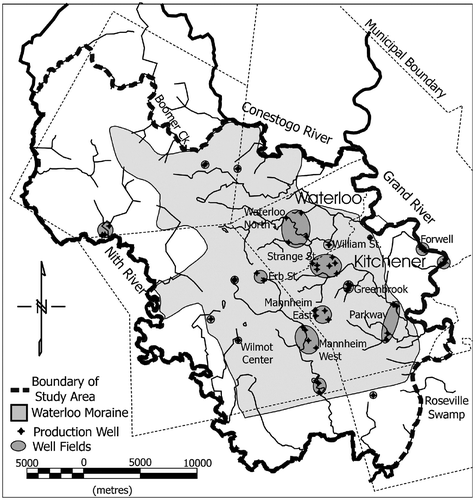
Figure 3. Waterloo Moraine, typical stratigraphic cross-section (from Martin and Frind Citation1998, with permission). a.s.l., above sea level.
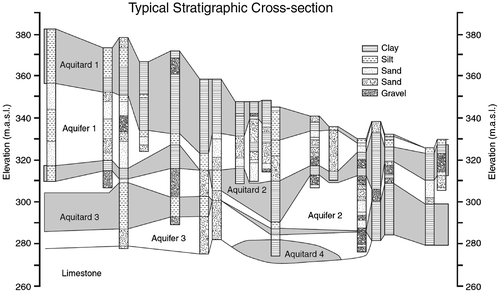
Figure 4. Waterloo Moraine conceptual model (from Martin and Frind Citation1998, with permission).
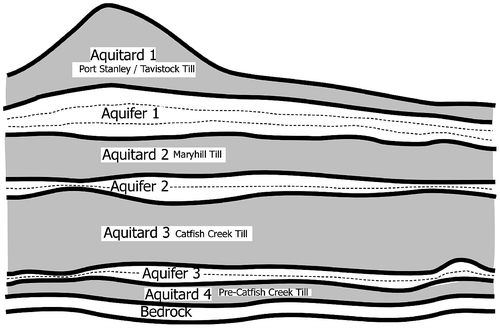
Figure 5. Waterloo Moraine model, three-dimensional finite element grid (from Martin and Frind Citation1998, with permission).

Figure 6. Waterloo Moraine model, simulated hydraulic heads in Aquifer 1 (from Martin and Frind Citation1998, with permission). mAMSL, meters above mean sea level.
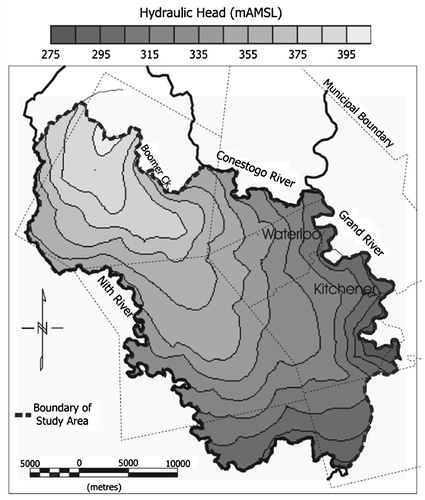
Figure 7. Greenbrook well field, particle tracks in plan view and in cross-section at 280 years (from Frind and Molson Citation2004).
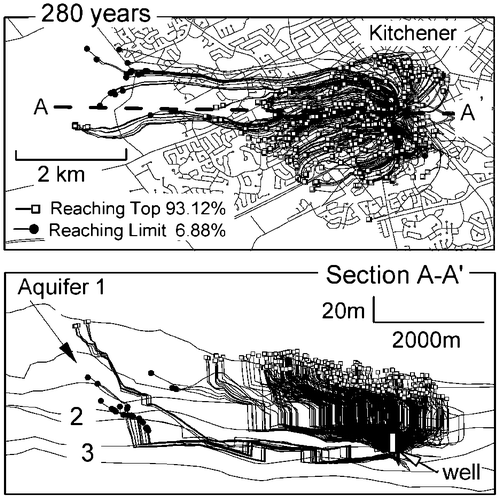
Figure 8. Greenbrook well field, capture probability plumes at 40 and 280 years, maximum value over depth; bottom: cross-section at 40 years (from Frind et al. Citation2002, with permission).
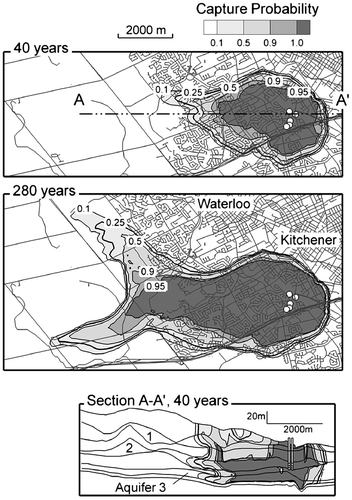
Figure 9. Greenbrook well field: (a) steady-state life expectancy vs. (b) 60-year capture probability (from Molson and Frind Citation2012).
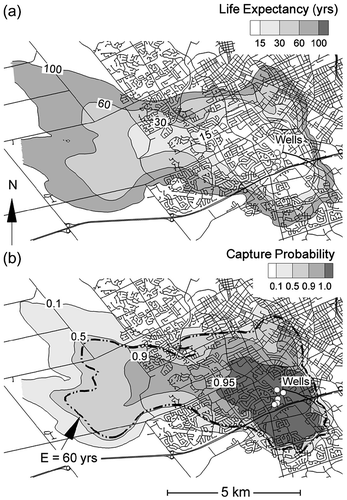
Figure 10. Typical breakthrough curve for well vulnerability mapping (Frind et al. 2006, with permission).
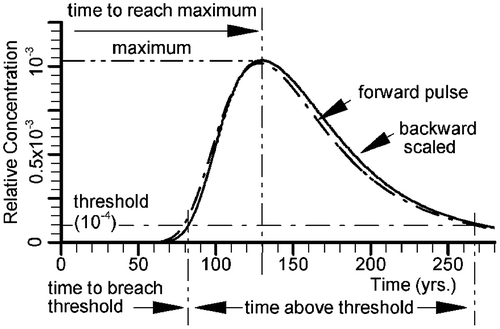
Figure 11. Well vulnerability maps for Mannheim well: (a) maximum relative concentration; (b) time taken (from Rahman et al. Citation2010).
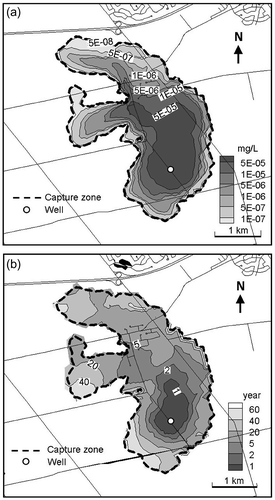
Figure 12. Capture probability maps for Mannheim well: (a) single-scenario analysis (WATFLOW), protection objective; (b) multi-scenario analysis, protection objective; (c) multi-scenario analysis, mitigation objective (from Sousa et al. Citation2013). The 0.5 contour has been emphasized.
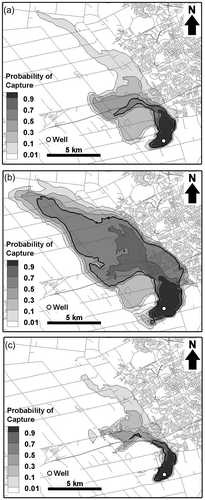
Figure 13. Greenbrook well field, chloride distributions in plan view at (a) ground surface, (b) detailed view at ground surface and (c) in pumped aquifer (from Bester et al. Citation2006, with permission).
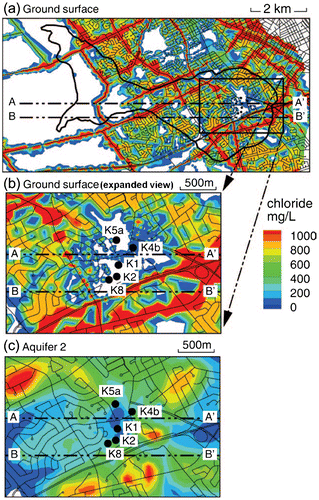
Figure 14. Greenbrook well field, chloride distributions, cross-sectional view (from Bester et al. Citation2006, with permission). Arterial roads indicated. Cl, chloride.
